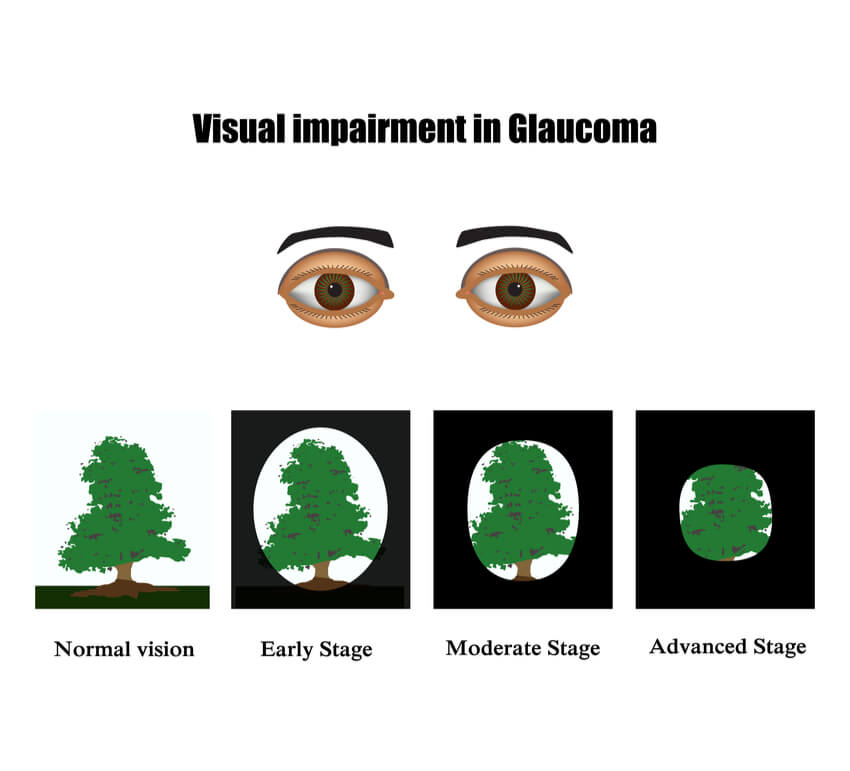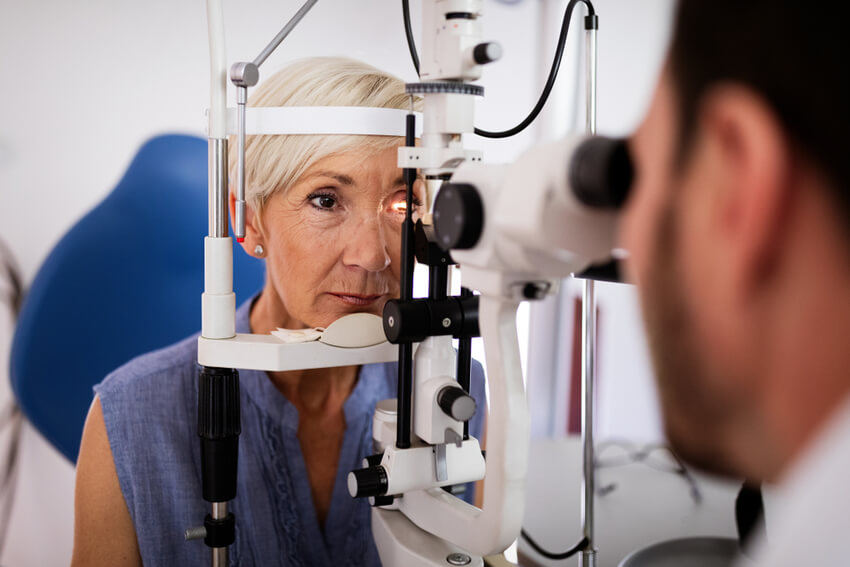Glaucoma – Risk Factors, Symptoms & Treatment
January is Glaucoma Awareness Month, and we’re here to tell you all about the condition that’s commonly known as the silent thief of vision. While the damage caused by glaucoma is permanent, treatment can stop it from getting worse, which is why early diagnosis is key. Understanding the risk factors, symptoms, and treatments can help with this, so let’s get started.
What Are The Signs Of Glaucoma?
Glaucoma is caused by pressure building up in the fluid within your eye due to blocked drainage channels. As a result, this can damage the optic nerve, causing loss of your peripheral vision first, eventually leading to complete blindness if left undetected and untreated.

There are 2 main types of glaucoma:
- primary open-angle glaucoma – this is the most common form, where pressure gradually and painlessly increases without noticeable symptoms until permanent damage has already been done to your vision
- closed-angle glaucoma – this is a medical emergency and can occur when the iris suddenly blocks your eye’s drainage channel, preventing fluid from circulating and leading to rapid pressure build up, with symptoms including:
- severe eye pain
- blurred vision that comes on quickly
- feelings of nausea and vomiting
- headaches
- halos or rainbow circles visible around lights
If you notice any symptoms of closed-angle glaucoma, we advise you to call 911 immediately or go to the emergency room so you can be assessed and treated as soon as possible.
Glaucoma Risk Factors
While glaucoma can affect anybody, you may have a higher risk of developing it if you:
- are over 40
- have a family history of glaucoma
- are of African, Asian or Hispanic descent
- have had previous eye injuries
- have nearsighted or farsighted vision
- take steroid medication for prolonged periods
- have a cornea with a thin center
- have an optic nerve that is thinning
- suffer from high blood pressure, diabetes, or migraines
Getting a Diagnosis

As open-angle glaucoma is usually asymptomatic in the early stages, it’s important to have regular, comprehensive eye examinations so your eye doctor can carry out the necessary tests to check your eye pressure and the health of the back of your eyes.
At Davis Eyecare Associates, we use advanced diagnostic tools such as our OCT scan to detect any changes to your retina, and our M700 Automated Perimeter to assess your visual fields, which will show if there are any issues with your peripheral vision.
We also offer specialist contact lenses that monitor the pressure in your eyes to help keep track of your glaucoma and slow down the progression of the disease.
Glaucoma Treatment Options
The first treatment for glaucoma is usually given in the form of medicated eye drops to reduce your eye pressure. These eye drops are used everyday to successfully manage your glaucoma.

This treatment is usually effective in most cases, but if it doesn’t reduce your eye pressure enough, you may need to be referred for surgery.
Be Proactive
Early detection and treatment of glaucoma are vital to helping you to protect your vision. So, if you suspect you or a loved one has symptoms of glaucoma, get in touch now to speak to our friendly team for advice and book an eye examination for your peace of mind.
